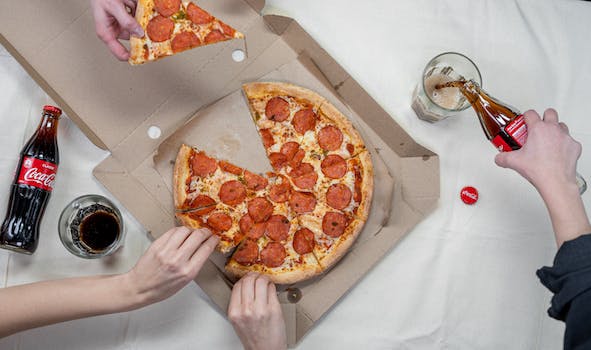

-
Table of Contents
Unveiling the Narrative: Coca-Cola's 'Share a Coke' Campaign
Introduction
The 'Share a Coke' campaign by Coca-Cola is a highly successful and widely recognized marketing initiative that aimed to create a personal connection with consumers. Launched in 2011, this campaign involved replacing the Coca-Cola logo on bottles and cans with popular names and phrases, encouraging people to share a Coke with someone they know. This introduction will delve into the narrative behind the 'Share a Coke' campaign, exploring its objectives, strategies, and impact on Coca-Cola's brand image and consumer engagement.
The Evolution of Coca-Cola's 'Share a Coke' Campaign: Unveiling the Narrative
The 'Share a Coke' campaign by Coca-Cola has become one of the most successful and iconic marketing campaigns in recent years. It has captured the attention of consumers worldwide and has been praised for its innovative approach to personalization and storytelling. In this article, we will delve into the evolution of the 'Share a Coke' campaign and uncover the narrative behind its success.
The campaign was first launched in Australia in 2011 and quickly gained popularity. The idea behind it was simple yet powerful – to replace the Coca-Cola logo on bottles and cans with popular names and phrases. This personalization element was a game-changer in the world of marketing, as it allowed consumers to feel a sense of ownership and connection with the brand. By putting their names on the products, Coca-Cola was able to create a unique and memorable experience for its customers.
The success of the campaign in Australia prompted Coca-Cola to expand it globally. In 2014, the 'Share a Coke' campaign was launched in over 80 countries, including the United States, Canada, and the United Kingdom. The company went beyond just names and introduced additional phrases such as 'Best Friend,' 'Soulmate,' and 'BFF' to appeal to a wider audience. This expansion further solidified the campaign's narrative of fostering connections and relationships through the act of sharing a Coke.
One of the key factors that contributed to the success of the 'Share a Coke' campaign was its ability to tap into the power of social media. Coca-Cola encouraged consumers to share photos of themselves with personalized Coke bottles using the hashtag #ShareACoke. This created a viral sensation, with millions of people sharing their experiences and spreading the word about the campaign. The use of social media not only amplified the reach of the campaign but also allowed Coca-Cola to engage directly with its customers and build a community around the brand.
Another aspect of the campaign's narrative was its focus on nostalgia and emotional connections. By featuring popular names from different generations, Coca-Cola was able to evoke feelings of nostalgia and remind consumers of their own personal memories associated with the brand. Whether it was finding their own name on a bottle or gifting a personalized Coke to a loved one, the campaign tapped into the universal desire for connection and shared experiences.
The 'Share a Coke' campaign also showcased Coca-Cola's commitment to diversity and inclusivity. In addition to popular names, the company introduced bottles with labels such as 'Mom,' 'Dad,' and 'Grandma,' recognizing the importance of family and celebrating different roles and relationships. This inclusive approach resonated with consumers and further strengthened the campaign's narrative of bringing people together.
In conclusion, the 'Share a Coke' campaign by Coca-Cola has successfully unveiled a narrative centered around personalization, connection, and inclusivity. By replacing the Coca-Cola logo with popular names and phrases, the campaign created a unique and memorable experience for consumers. Through the power of social media, it engaged with a global audience and fostered a sense of community. The campaign's focus on nostalgia and emotional connections further strengthened its narrative, while its commitment to diversity and inclusivity showcased Coca-Cola's values. Overall, the 'Share a Coke' campaign stands as a testament to the power of storytelling in marketing and the enduring appeal of personalization.
Analyzing the Impact of Coca-Cola's 'Share a Coke' Campaign on Consumer Behavior

Unveiling the Narrative of Coca-Cola's 'Share a Coke' Campaign
Analyzing the Impact of Coca-Cola's 'Share a Coke' Campaign on Consumer Behavior
Coca-Cola, one of the world's most iconic brands, has always been at the forefront of innovative marketing strategies. In recent years, their 'Share a Coke' campaign has taken the advertising world by storm, captivating consumers and sparking conversations. This article aims to delve into the narrative behind this campaign and analyze its impact on consumer behavior.
The 'Share a Coke' campaign, first launched in Australia in 2011, was a bold departure from traditional marketing tactics. Instead of featuring the Coca-Cola logo on their bottles, the company replaced it with popular names and phrases. This personalized approach aimed to create an emotional connection with consumers, making them feel special and unique.
The campaign's narrative revolved around the idea of sharing moments of happiness with loved ones. By associating their product with positive emotions and personal connections, Coca-Cola sought to tap into the deep-rooted human desire for social interaction and belonging. This narrative was reinforced through various touchpoints, including television commercials, social media engagement, and experiential marketing events.
One of the key impacts of the 'Share a Coke' campaign was its ability to generate buzz and create a sense of excitement among consumers. The personalized bottles became highly sought-after collectibles, with people actively searching for their own names or those of their friends and family. This frenzy of searching and sharing on social media platforms further amplified the campaign's reach and visibility.
Moreover, the campaign had a profound effect on consumer behavior. By personalizing their product, Coca-Cola successfully tapped into the power of word-of-mouth marketing. People were not only buying the product for themselves but also purchasing it as a gift for others. This act of sharing and gifting created a ripple effect, as recipients were then encouraged to share their own experiences, further fueling the campaign's narrative.
The 'Share a Coke' campaign also had a significant impact on brand loyalty. By associating their product with personal connections and positive emotions, Coca-Cola was able to strengthen its relationship with consumers. People felt a sense of ownership and attachment to the brand, as they saw it as a facilitator of meaningful moments and connections. This emotional bond translated into increased brand loyalty, with consumers more likely to choose Coca-Cola over its competitors.
Furthermore, the campaign's narrative of sharing and togetherness aligned with the growing trend of social media sharing. People were eager to showcase their personalized bottles and share their experiences online, creating a sense of community and camaraderie. This social validation further reinforced the campaign's message and encouraged others to join in the conversation.
In conclusion, Coca-Cola's 'Share a Coke' campaign successfully tapped into the power of personalization and emotional storytelling. By creating a narrative centered around sharing moments of happiness, the campaign resonated with consumers on a deep level. It generated buzz, influenced consumer behavior, and strengthened brand loyalty. The campaign's impact was not only felt in terms of sales but also in the way it fostered a sense of community and connection among consumers. The 'Share a Coke' campaign serves as a testament to the power of storytelling and the ability of brands to create meaningful experiences for their customers.
Unveiling the Success Factors Behind Coca-Cola's 'Share a Coke' Campaign
Unveiling the Narrative of Coca-Cola's 'Share a Coke' Campaign
Coca-Cola's 'Share a Coke' campaign has become one of the most successful marketing initiatives in recent years. This article aims to unveil the success factors behind this campaign and shed light on the narrative that made it so effective.
The 'Share a Coke' campaign was launched in 2011 in Australia and quickly spread to other countries around the world. The idea behind the campaign was simple yet powerful: to personalize Coca-Cola bottles by replacing the iconic logo with popular names. This personalization aimed to create a sense of connection and emotional attachment between consumers and the brand.
One of the key success factors of the 'Share a Coke' campaign was its ability to tap into the power of personalization. By replacing the Coca-Cola logo with names, the campaign made consumers feel special and unique. People were excited to find their own names or the names of their loved ones on the bottles, and this created a strong emotional bond with the brand.
Another factor that contributed to the success of the campaign was its ability to generate social media buzz. Coca-Cola encouraged consumers to share pictures of themselves with their personalized bottles on social media platforms using the hashtag #ShareACoke. This created a viral effect, as people wanted to show off their personalized bottles and be part of the conversation. The campaign became a topic of discussion and generated millions of user-generated content, further amplifying its reach and impact.
Furthermore, the 'Share a Coke' campaign successfully tapped into the power of nostalgia. By using popular names from different generations, Coca-Cola was able to evoke memories and create a sense of nostalgia among consumers. People were reminded of their childhood, their friends, and their shared experiences. This emotional connection with the past made the campaign resonate with a wide range of consumers, regardless of their age or background.
The campaign also leveraged the power of storytelling. Coca-Cola created a series of television commercials and online videos that showcased heartwarming stories of people sharing a Coke with their loved ones. These stories were relatable and touched the hearts of viewers, further strengthening the emotional bond with the brand. By telling these stories, Coca-Cola was able to create a narrative around the campaign and make it more than just a marketing gimmick.
In addition to these success factors, the 'Share a Coke' campaign was also supported by a well-executed marketing strategy. Coca-Cola partnered with retailers to ensure widespread availability of personalized bottles, and the campaign was promoted through various channels, including television, print, and digital media. This multi-channel approach helped to reach a wide audience and maximize the campaign's impact.
In conclusion, the success of Coca-Cola's 'Share a Coke' campaign can be attributed to several key factors. The campaign tapped into the power of personalization, generated social media buzz, evoked nostalgia, leveraged storytelling, and was supported by a well-executed marketing strategy. By combining these elements, Coca-Cola was able to create a powerful narrative that resonated with consumers and made the campaign a resounding success.
Q&A
1. What is the main objective of Coca-Cola's 'Share a Coke' campaign?
The main objective of Coca-Cola's 'Share a Coke' campaign is to create a personalized and emotional connection with consumers by replacing the Coca-Cola logo on their bottles with popular names or phrases.
2. How did Coca-Cola implement the 'Share a Coke' campaign?
Coca-Cola implemented the 'Share a Coke' campaign by printing popular names and phrases on their bottles and cans, allowing consumers to find and share personalized Coca-Cola products with their friends and family.
3. What impact did the 'Share a Coke' campaign have on Coca-Cola's brand?
The 'Share a Coke' campaign had a significant impact on Coca-Cola's brand, resulting in increased consumer engagement, social media buzz, and sales. It successfully revitalized the brand and strengthened its emotional connection with consumers.
Conclusion
In conclusion, Coca-Cola's 'Share a Coke' campaign successfully unveiled a compelling narrative that focused on personalization and connection. By replacing the Coca-Cola logo with popular names and phrases, the campaign aimed to create a sense of individuality and encourage people to share their personalized bottles with others. The campaign effectively tapped into the power of storytelling and social media, generating widespread engagement and positive brand associations. Overall, 'Share a Coke' demonstrated the importance of crafting a narrative that resonates with consumers and fosters meaningful connections.












